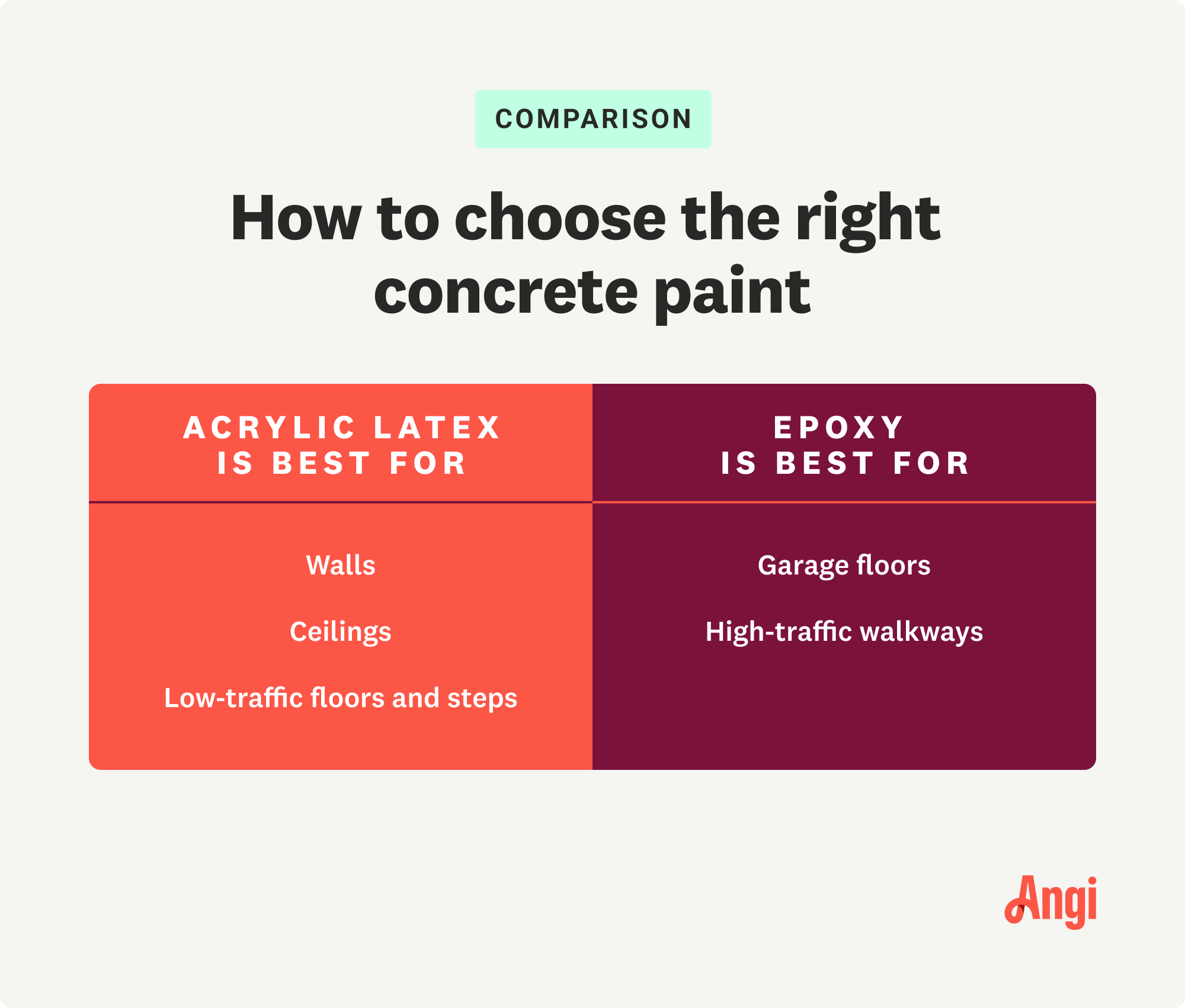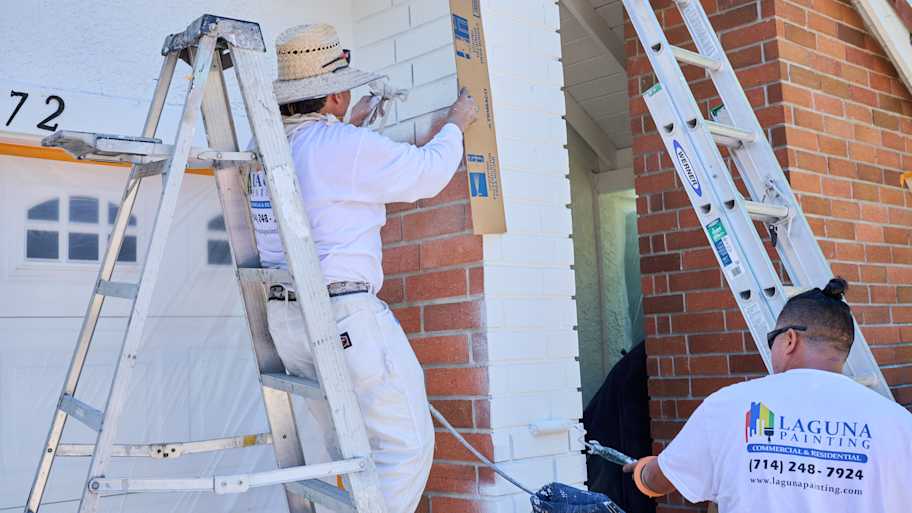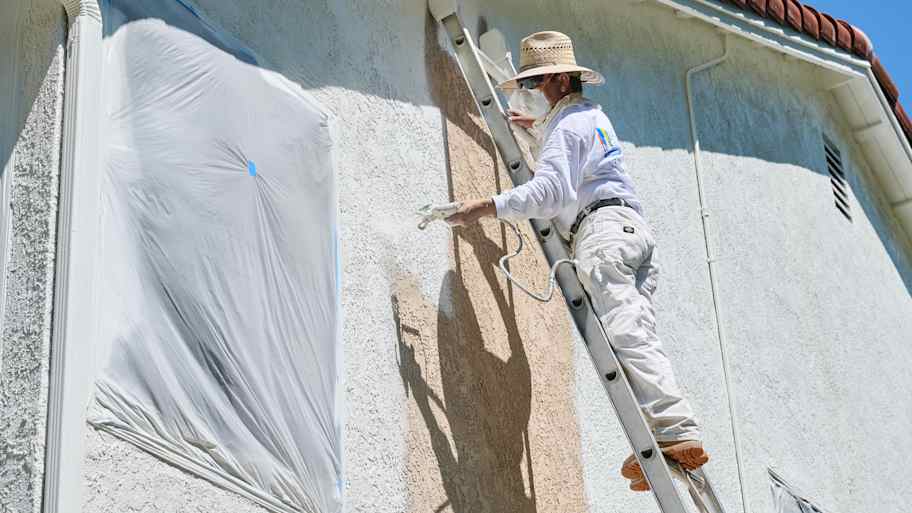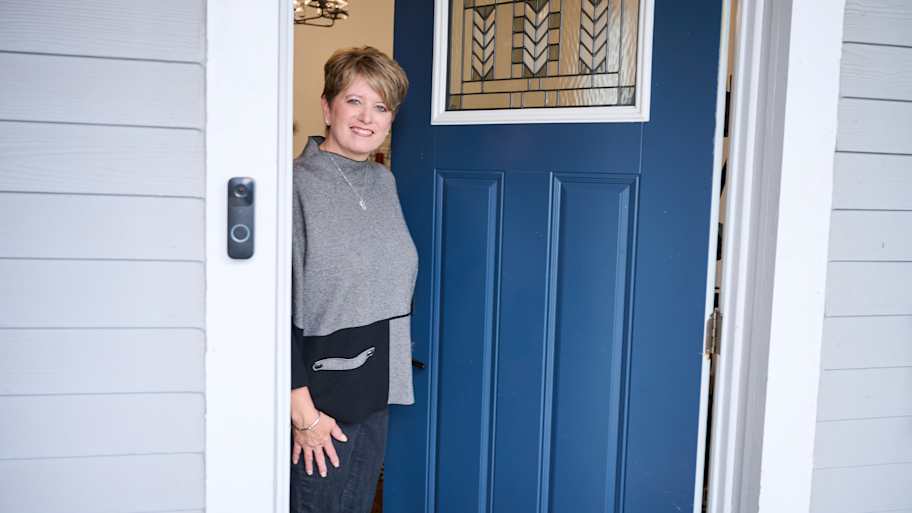7 Tips for Choosing the Best Concrete Paint
Make your concrete paint project easy


Wondering how to make a concrete decision about the best concrete paint? You can’t go by aesthetic alone (though there are lots of concrete-friendly colors to choose from).
Fortunately, painting the hardest surfaces on your property doesn't have to be hard itself, especially once you know the basics of finding the best concrete paint. Here’s how to make your pick.
1. Choose the Right Type of Paint
Just any run-of-the-mill paint won’t cut it when it comes to painting concrete. Whether you’re painting your concrete foundation or painting your driveway, here’s how to choose the right supplies for your surface.

Acrylic Latex Paint
Best for: Walls, ceilings, and low-traffic areas
As a water-based paint, acrylic latex mixes and spreads with ease. This makes it an ideal choice for a variety of masonry and concrete projects. Acrylic latex’s easy application is also ideal for amateurs because you won't need special brushes, rollers, and complex tools to get an even, polished application.
Acrylic latex also has the bonus of being a very affordable option when compared to other paints for concrete. And while it’s not the most durable option, it’s especially good for vertical surfaces that don't get any foot traffic.
Epoxy paint

Best for: Garages and high-traffic areas
While acrylic latex is the most affordable option for painting concrete surfaces, it's not the most durable. You might have to paint something like a garage floor every two to three years if you use acrylic latex. This is where epoxy should enter the picture as one of the most affordable garage floor ideas.
Epoxy paint is a durable, long-lasting choice that's a perfect match for an outdoor walkway, fiber cement siding, or busy garage floor. Its ability to resist water and stains helps to keep your property beautiful longer. Just be prepared for the added cost and labor needed to get every epoxy coat down.
Epoxy paints typically come in kits that require you to manually mix resin and hardener. You'll then need to meticulously spread the mixture for an even application.
The thickness of epoxy can make application tricky for a DIY project, so it might be best to call in a local painting pro for the job. A professional application provides a rock-solid covering that makes your garage look like a showroom.
2. Look for Anti-Slip Mixes
If you're painting exterior concrete steps or walkways in areas prone to slickness, look for special acrylic latex blends featuring small anti-slip particles that create an effortless anti-slip coating. You’ll thank yourself next time it rains or freezes!
3. Consider Gloss
Glossy concrete paint tends to offer enhanced durability, stain resistance, and longevity. Glossy paint also hides scratches and scuffs better. However, there is something to know about the foot traffic factor with glossy concrete paint: This type of concrete paint tends to make surfaces slippery because the moisture-repellent qualities prevent water from absorbing. Make sure you're not creating a trip hazard with a slick surface.
4. Make Choices Based on Weather Resistance
Pay attention to labels that say interior concrete paint, exterior concrete paint, and indoor-outdoor paint.
Concrete paint's performance varies wildly based on where you're applying the paint. Exterior concrete is susceptible to changes from heat, freezing, and moisture during different periods of the year. Using high-quality, weather-rated exterior concrete paint is the top way to prevent unsightly concrete cracks.
Snow and rain are notorious for breaking down low-quality concrete paint. Using interior concrete paints on outside surfaces increases your chances of seeing cracking and fading.
Use high-quality exterior-grade paint with weather resistance for outdoor concrete. An exterior epoxy will reduce your need to touch up and repair your work. Of course, you should be prepared to redo the job in a few years because no concrete paint on the market lasts forever.
5. Consider Cleanup
If you’re planning to paint your garage floor, you’ll want to know that the paint you choose can stand up to a good wash. You won’t want your dirty tools or muddy boot prints to ruin your new paint job. Epoxy-painted concrete can handle regular washing with soap and water, so it’s the better choice for areas you know will get dirty. While latex paint is much easier to clean up during the application process, it won’t withstand a good scrub as well.
6. Look at the Longevity
Painting can be a real pain, and it’s not something you want to do often. So pick a paint that will last, especially in high-traffic areas. Not only will this alleviate some back-breaking labor, but it’s also more cost-effective to do a high-quality job once rather than use cheaper paint several times. You’ll need a very durable paint like epoxy for your floors, but you can get away with using latex on your lesser-touched walls.
7. Get Creative
If it’s your style and you’re not picky about the color palette, you absolutely can paint your concrete the classic gray—but this is an opportunity for you to have some fun! There are so many different color options for concrete, from sky blue to tissue pink. Sprucing up your garage floor doesn’t need to be expensive, either. There are plenty of cheap options beyond paint to look into.



















